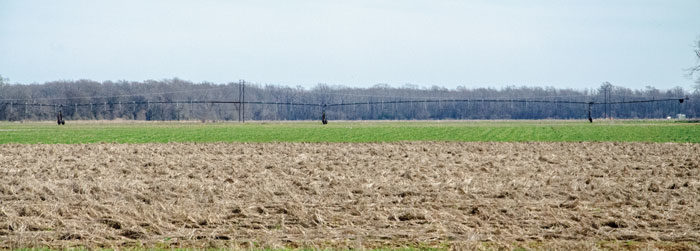No-Till Farmer
Get full access NOW to the most comprehensive, powerful and easy-to-use online resource for no-tillage practices. Just one good idea will pay for your subscription hundreds of times over.

IRRIGATED HORIZONS. Adam Chappell and his brother Seth farm about 7,400 acres near Cotton Plant, Ark. They haven’t applied potassium or phosphorus since 2016 after noticing that soil testing wasn’t showing correlative results when it comes to yields.
Adam Chappell remembers when he decided to remove two elements from his farm’s periodic table.
Until 2015, the fourth-generation Arkansas no-tiller and 2022 Responsible Nutrient Management Practitioners Award recipient had been purchasing the usual rates of phosphorus (P) and potassium (K) on his family land outside of Cotton Plant, Ark., where he farms with his brother, Seth. The annual program is sponsored by AgroLiquid and No-Till Farmer.
“We were spending all this money on fertilizer, P and K specifically,” he said. “We’d check our levels and they’d be optimal. And then we’d get this recommendation to put out P and K as a removal rate. We started not doing it on some acres, and then we would take samples again and there wouldn’t be any difference between where we put the removal rate fertilizer and no fertilizer.”
It didn’t take long for Chappell to question whether replacing the removal rate was necessary.
“We didn’t see any significant difference where we’d been spending the money and where we hadn’t,” he says.

NAME: Adam Chappell
LOCATION: Cotton Plant, Ark.
ACRES: 7,400
YEARS NO-TILLING: 10
CROPS: Soybeans, rice, corn, cotton
ANNUAL PRECIPITATION: 49 inches
IRRIGATION: Yes
LIVESTOCK: No
He drastically reduced the amount of P and K applied to his acres in 2015. He followed up by cutting it out altogether in 2016, and hasn’t applied a drop since, other than small amounts that come with his starter fertilizer at planting.
He still struggles to explain exactly how it happens…